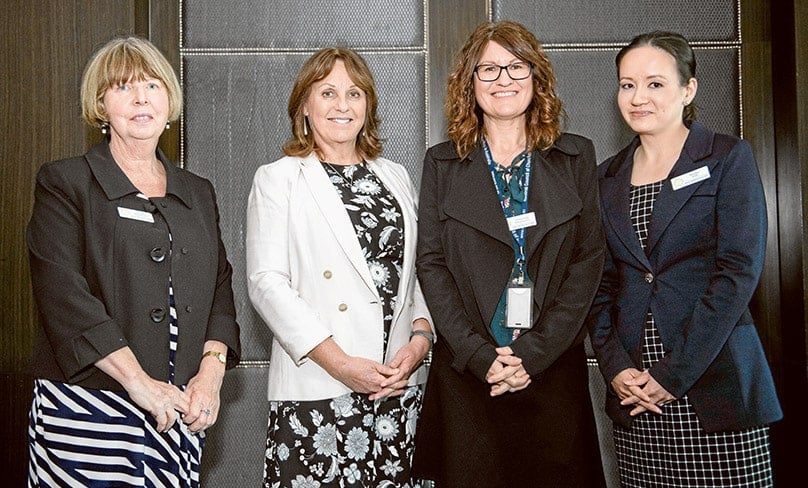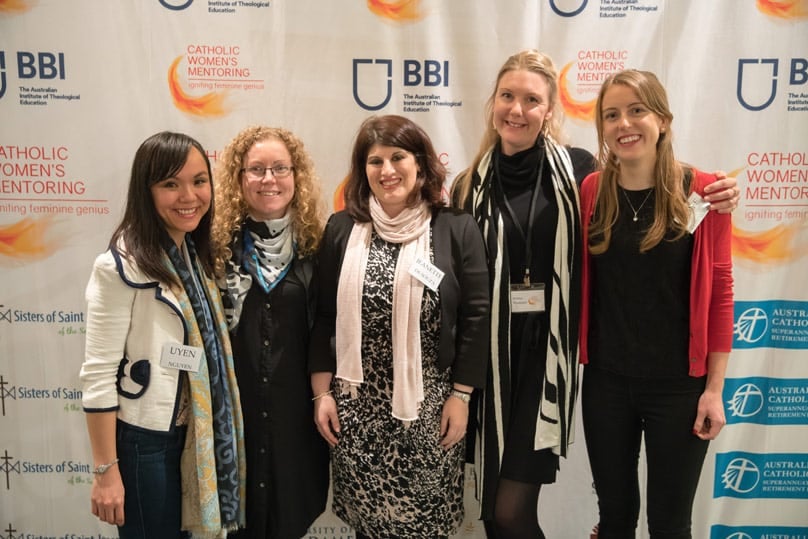
On the weekend, I read an article saying that, in an attempt to be more inclusive, a number of Catholic schools in Brisbane have begun to use gender-neutral language for religion classes and in prayers.
One private Catholic school uses the word “Godself” instead of “Himself.” Another prays in the name of “The Creator, Jesus and the Holy Spirit.”
A different school does not pray to the “Lord” because it is seen as a masculine term, while another still allows the use of the “Our Father,” but says it is more appropriate for Father’s Day celebrations, because “context is important.”
Context is important, I agree.
So, I would like to provide some context for those who feel like the Church needs to do more to be inclusive of women.
Importance of women in the Church
Over the weekend, I was privileged to speak at the Order of Malta national assembly on the topic of increasing the role of women in the Church. It’s not a topic I’ve spoken on before, and so I needed to do some research, particularly into current levels of the participation of women in Church life.
What I found was that, contrary to the oft-cited claim that more needs to be done to increase the participation of women in the Church, that women are represented in good numbers at pretty much all levels of Church life.
According to the 2016 census, there are over 250,000 more Catholic women than men in the country; an average of 185 more women in each of our 1300 or so parishes. The difference is not as noticeable if we consider only the 12 per cent of the Catholic population that actually attend Sunday Mass, but it’s still significant.
In census years, the National Church Life Survey – an in-depth survey of the attitudes of those who are frequent Church attendees – is also conducted. In 2016, it was completed by about 5 per cent of Mass-going Catholics. sixty two per cent of the respondents were female.
The same survey recorded a high level of satisfaction about opportunities to contribute to the life of the Church, with only 10 per cent of respondents disagreeing or strongly disagreeing that their gifts and talents were being used well in the Church. What’s more, only 17 per cent wanted to be more involved than they currently are.
For all the calls for increased lay participation in the Church – something which is good and necessary – it is important to know that most lay people don’t seem to want their involvement to increase.
This might mean that rather than focussing attention on removing so-called “structural barriers” to participation, what we really need to do is to invite and challenge and inspire the faithful to take up existing opportunities to serve, and to encourage them to come up with new and creative ways to be the face of Christ in the world.
In our parishes, we see that parish councils and liturgy committees usually have high numbers of women, and most parish secretaries are women. This is not an insignificant role, because it is usually the first encounter most people – even visitors or those seeking baptism, weddings or funerals – have with the parish.
Looking beyond parishes to employment, our data tells us that more than 77 per cent of Catholic Church employees are women.
The high proportion of female staff in our education, health and aged care institutions mean that, as in our parishes, Australians who encounter the Catholic Church through its ministries are much more likely to do so via a woman.
Women in leading national Church positions
Every diocese and agency is different, but there is also a large number of women serving in diocesan chanceries. Roles like chancellor, business manager, general counsel, communications director and head of safeguarding are just some of the roles being filled by women in various dioceses.
At a national level, the CEO of Catholic Health Australia is female, as is the Executive Director of the National Catholic Education Commission, the CEO of Catholic Social Services Australia, the CEO of Catholic Professional Standards Limited and the facilitator of the upcoming Plenary Council.
In parishes, education, health care, social services, safeguarding, and the plenary council, women are taking a lead.

Doing the research about the level of participation of women in the Church was great, because it completely changed the nature of what I had to say.
Instead of lamenting the lack of opportunities for women in the Church, I was able to share with those gathered that women are represented and, in many cases over-represented, in the life of the Church today.
I’ve written it before in this column, but those who tell women that they are not valued or not included in the life of the Church are lying, and are doing a great disservice to so many women who contribute well to the Church, and who want to do more.
My message to the Brisbane schools and others who want to follow their lead is simple: Your students will benefit much more from the rich Catholic tradition of forming them in virtue than from being trained in virtue-signalling.
Related articles:
